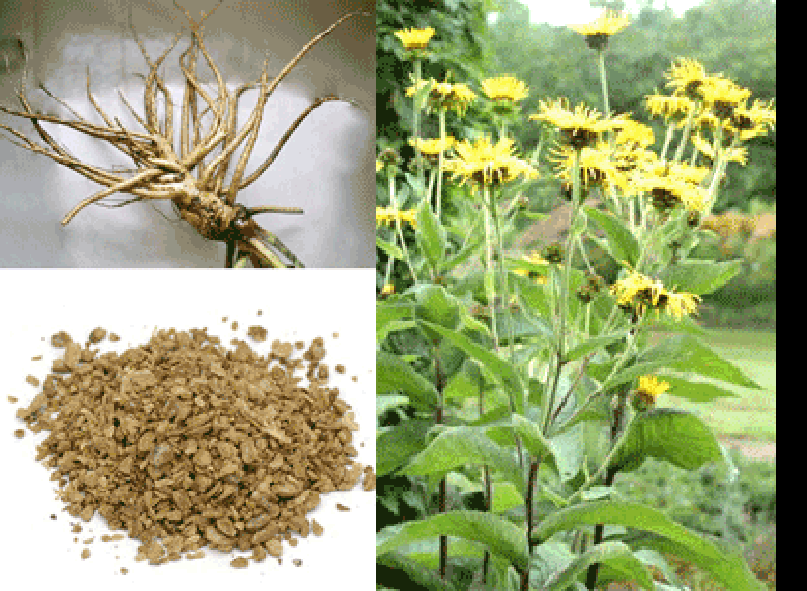FabulousFusionFood's Spice Guide for Elcampane Home Page
 The elcampane root
and ground root
(left) and the full
elcampane Inula
helenium
The elcampane root
and ground root
(left) and the full
elcampane Inula
heleniumplant (right).
Welcome to the summary page for FabulousFusionFood's Spice guide to Elcampane along with all the Elcampane containing recipes presented on this site, with 3 recipes in total.
This is a continuation of an entire series of pages that will, I hope, allow my visitors to better navigate this site. As well as displaying recipes by name, country and region of origin I am now planning a whole series of pages where recipes can be located by meal type and main ingredient. This page gives a listing of all the Cornish recipes added to this site.
These recipes, all contain as a major flavouring.
Elcampane, Inula helenium, (also known as Horse-heal) is a perennial flowering plant of the Asteraceae (Aster/Daisy) family which is native to western, central and southern Europe along with western Asia. The stems of this plant are rigid and grow to some 1.5m in height. Its leaves are large and toothed, the lower ones stalked, the rest embracing the stem; the flowers are yellow some 5cm in diameter.
The root is thick, branching and mucilaginous, and has a warm, bitter taste and a camphoraceous odour. The Romans used both the leaves and the root in their cooking and it was grown by them as a potherb. To modern tastes though the cooked leaves can be rather bitter in flavour, despite their aromatic tone.
The root — which is the spice component of the plant — can be candied and eaten as a sweet. It can also be used to flavour puddings where it lends a mild camphorous note. It can also be macerated with vinegar and used as a condiment. The root also works in game stews where it's camphorous tone can complement the dense meatiness of the broth.
Unless you grow your own elcampane, you will not find fresh root. The dried root (see image), however, is sold in specialist and health-food stores.
This is a continuation of an entire series of pages that will, I hope, allow my visitors to better navigate this site. As well as displaying recipes by name, country and region of origin I am now planning a whole series of pages where recipes can be located by meal type and main ingredient. This page gives a listing of all the Cornish recipes added to this site.
These recipes, all contain as a major flavouring.
Elcampane, Inula helenium, (also known as Horse-heal) is a perennial flowering plant of the Asteraceae (Aster/Daisy) family which is native to western, central and southern Europe along with western Asia. The stems of this plant are rigid and grow to some 1.5m in height. Its leaves are large and toothed, the lower ones stalked, the rest embracing the stem; the flowers are yellow some 5cm in diameter.
The root is thick, branching and mucilaginous, and has a warm, bitter taste and a camphoraceous odour. The Romans used both the leaves and the root in their cooking and it was grown by them as a potherb. To modern tastes though the cooked leaves can be rather bitter in flavour, despite their aromatic tone.
The root — which is the spice component of the plant — can be candied and eaten as a sweet. It can also be used to flavour puddings where it lends a mild camphorous note. It can also be macerated with vinegar and used as a condiment. The root also works in game stews where it's camphorous tone can complement the dense meatiness of the broth.
Unless you grow your own elcampane, you will not find fresh root. The dried root (see image), however, is sold in specialist and health-food stores.
The alphabetical list of all Elcampane recipes on this site follows, (limited to 100 recipes per page). There are 3 recipes in total:
Page 1 of 1
| Clate Origin: England | Oleum Liburnicum Sic Facies (Liburnian Oil is Made Thus) Origin: Roman | Vermouth di Torino (Turin Vermouth) Origin: Italy |
Page 1 of 1